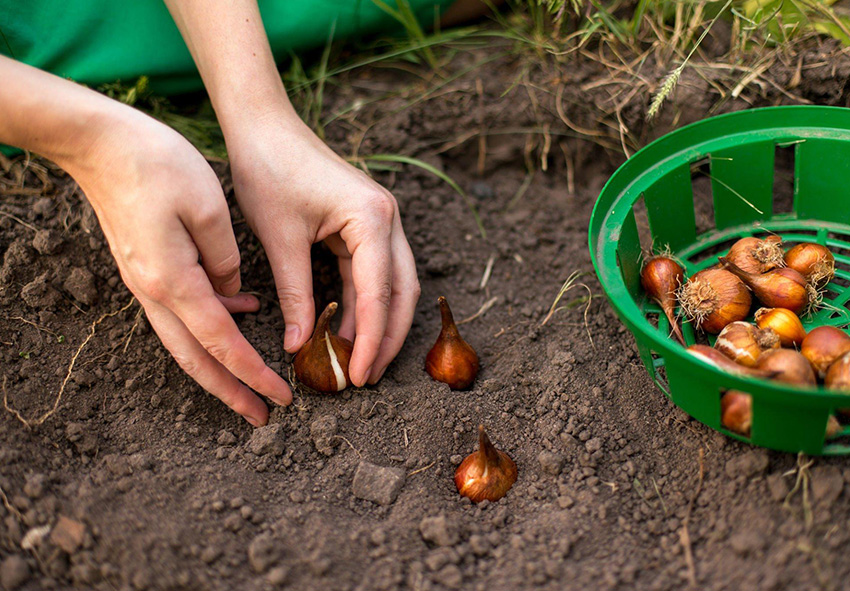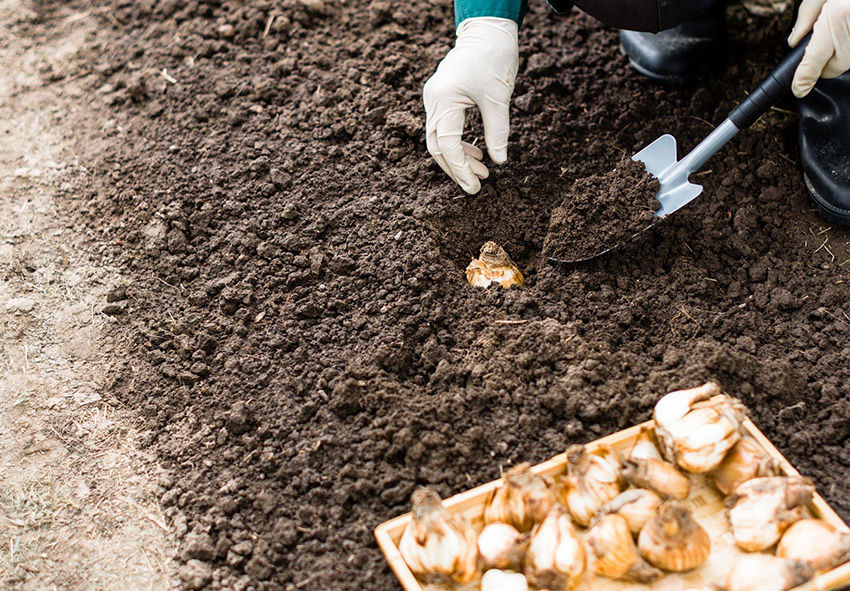Any garden needs bulbs because they make it simple to add beauty and color with little work. They are ideal for any garden because of their wide range of colors, sizes, and forms. We’ll cover all you need to know about planting and caring for bulbs in this manual so you may reap the rewards of your effort for many years to come.
Introduction to Bulb Gardening
Bulb gardening is a well-liked method of enhancing the beauty and color of your yard. With little upkeep, you may benefit from blooming flowers for years. Additionally, because bulbs can be grown in containers, they are ideal for those with small gardens.
Benefits of Growing Bulbs
Bulb cultivation in the garden has a lot of advantages. One benefit is that they provide a splash of color and beauty that may improve any scene. They are a fantastic option for time-constrained gardeners since they are very simple to maintain. Furthermore, because bulbs bloom at various times of the year, you may enjoy a wide range of blooms from spring through summer.
Choosing the Right Bulbs
Selecting the appropriate bulbs is essential before you begin planting. There are several varieties of bulbs, and each one has distinct qualities. Some bulbs perform better during specific seasons, while others are more adaptable to various kinds of soil.
Types of Bulbs for Different Seasons
The time of year when bulbs bloom is a crucial factor to take into account while selecting them. Tulips and daffodils should be planted in the autumn if you want them to blossom in the spring. Dahlias and gladioli should be planted in the spring if they bloom in the summer.
How to Pick the Best Quality Bulbs
It’s important to pick healthy, high-quality bulbs when choosing bulbs for your garden. Search for solid, ripe bulbs that show no symptoms of rot or mold. Make sure the bulbs are the appropriate size for the planting place in addition.
Preparing for Planting

It’s crucial to adequately prepare the planting space before you plant your bulbs. Your bulbs will grow robust and healthy as a result, producing lovely flowers.
Finding the Perfect Spot
For optimal growth, bulbs need a sunny area with well-drained soil. Make certain that the location you choose gets at least six hours of direct sunshine every day. Make sure the soil is rich and has good drainage as well.
Soil Preparation and Fertilization
It’s crucial to adequately prepare the soil before planting your bulbs. Your bulbs will benefit from the nutrients they need to develop strong and healthily if you do this. To increase the fertility of the soil, use compost or old manure. A slow-release fertilizer should also be used to provide your bulbs the nutrition they need to thrive.
Tools Needed for Planting
A trowel, bulbs, and a watering can are the essential items you’ll need to plant your bulbs. To make planting simpler, you may also wish to utilize a bulb planter.
Planting Bulbs

It is crucial to make sure that you have chosen the appropriate bulbs for the season and your soil type after you have done soil preparation. For a colorful and varied show, take your time selecting the finest bulbs for your garden and think about planting a variety of bulbs. Make sure to plan your plantings beforehand, taking into mind things like sunshine, depth, and spacing. Once your bulbs are in place, don’t forget to give them the nutrients they need to develop strong and healthily, as well as frequent watering. Your bulbs will grow and provide a stunning display of color and scent for years to come if you give them the necessary care and attention.
When to Plant Bulbs
Before the ground freezes in the autumn is the ideal time to plant bulbs. Your bulbs will have ample time to grow roots before winter as a result.
How to Plant Bulbs
To plant your bulbs, dig a hole that is two to three times the height of the bulb. Place the bulb in the hole with the pointed end facing up. Cover the bulb with soil and water thoroughly.
Proper Watering Techniques
After planting your bulbs, it’s important to water them thoroughly. Bulbs need plenty of water to establish roots and grow strong. Water your bulbs deeply once a week, or more often if the weather is hot and dry.
Aftercare for Bulbs
If you want your bulbs to bloom again the next year after they have flowered, you must properly care for them.
Mulching and Weeding
Put a layer of organic material, such crushed leaves or bark, over your bulbs as a mulch. This will aid in moisture retention and safeguard your bulbs from abrupt temperature swings. Additionally, weed your bulbs often to avoid competing with other plants for nutrients and water.
How to Prevent Diseases and Pests
Keep your yard neat and clutter-free to prevent illnesses and pests from injuring your bulbs. Additionally, avoid crowding your bulbs since doing so might result in disease and insect issues.
Bulb Storage and Division
After they have done flowering, dig out your bulbs and allow them to dry in a cool, dry area if you wish to keep them for the next year. When they are completely dry, keep them in a cool, dark location until you’re ready to plant them again. Additionally, to avoid overpopulation and guarantee good development, you may split your bulbs every few years.
Troubleshooting Common Problems

Despite your best efforts, growing bulbs sometimes has its share of issues. Here are some suggestions to assist you in resolving these problems.
Common Problems with Bulbs and How to Fix Them
- Bulb blossoming is absent: Lack of sunshine, poor soil conditions, or insufficient planting depth might all contribute to this. Make sure your bulbs are planted at the proper depth and in a sunny area with well-drained soil.
- Bulb rot is present: Inadequate drainage or overwatering may be at blame for this. Make sure the soil is well-drained and water your bulbs thoroughly but seldom.
- Pests are consuming bulbs: Animals like squirrels, rabbits, and other species may be at blame for this. To keep pests away, try covering your bulbs with wire mesh or placing them in raised beds.
Conclusion: Enjoying the Fruits of Your Labor
Bulb gardening is a fun and rewarding way to add color and beauty to your garden. By following the tips and techniques outlined in this guide, you can ensure that your bulbs bloom beautifully year after year. So get out there and start planting!
Remember, planting bulbs in the fall takes a little bit of preparation, but the results are well worth it. Imagine walking through your garden or home and admiring beautiful, colorful blooms. With proper care and attention, your bulbs will last for years and produce stunning flowers every season. So, don’t hesitate to try your hand at bulb gardening and enjoy the benefits of nature’s beauty right in your own backyard.
Frequently Asked Questions (FAQs) about bulbs
1. What are bulbs, and why should I consider planting them in my garden?
Bulbs are underground storage organs of certain plants that store energy and nutrients for future growth. They are popular among gardeners for their ability to produce beautiful flowers with minimal effort. Bulbs offer a wide variety of colors and shapes, making them a fantastic addition to any garden. They are also relatively low-maintenance, making them suitable for both beginners and experienced gardeners.
2. When is the best time to plant Holland bulbs in my garden?
The optimal time for planting bulbs typically depends on your climate. In most regions, the best time to plant spring-flowering bulbs like tulips and daffodils is in the fall, around September to November. For summer-flowering bulbs like lilies and gladiolus, spring is the ideal time to plant, typically from March to May. Be sure to check your local climate and planting guidelines for specific recommendations.
3. How deep should I plant bulbs, and what's the right spacing between them?
The general rule of thumb is to plant bulbs at a depth equal to three times their diameter. So, if a bulb is 2 inches in diameter, it should be planted 6 inches deep. The spacing between bulbs depends on the type and size of the bulb; a good guideline is to space them about 2-4 inches apart. However, always check the specific planting instructions provided on the bulb’s packaging for precise guidance.
4. What are the essential care tips for bulbs once they are planted?
After planting, water the bulbs thoroughly to help settle the soil and encourage root development. Mulch can be added to regulate soil temperature and retain moisture. Once the bulbs bloom, deadheads spent flowers to promote new growth and conserve energy. After blooming, allow the foliage to wither naturally, as it helps replenish the bulb for the next season. Fertilizing in the spring with a balanced fertilizer can also boost bulb health.
5. Can I purchase Dutch bulbs mentioned in this guide from your online store?
Our online store offers a wide selection of bulbs in various colors, making it easy for you to add these elegant beauties to your garden. We source our bulbs from reputable growers to ensure you receive high-quality specimens. Simply browse our online catalog, select your preferred varieties, and follow the easy ordering process. We’ll ship the bulbs right to your doorstep, so you can embark on your journey of planting and nurturing these exquisite flowers.
Published: 18.05.2023

